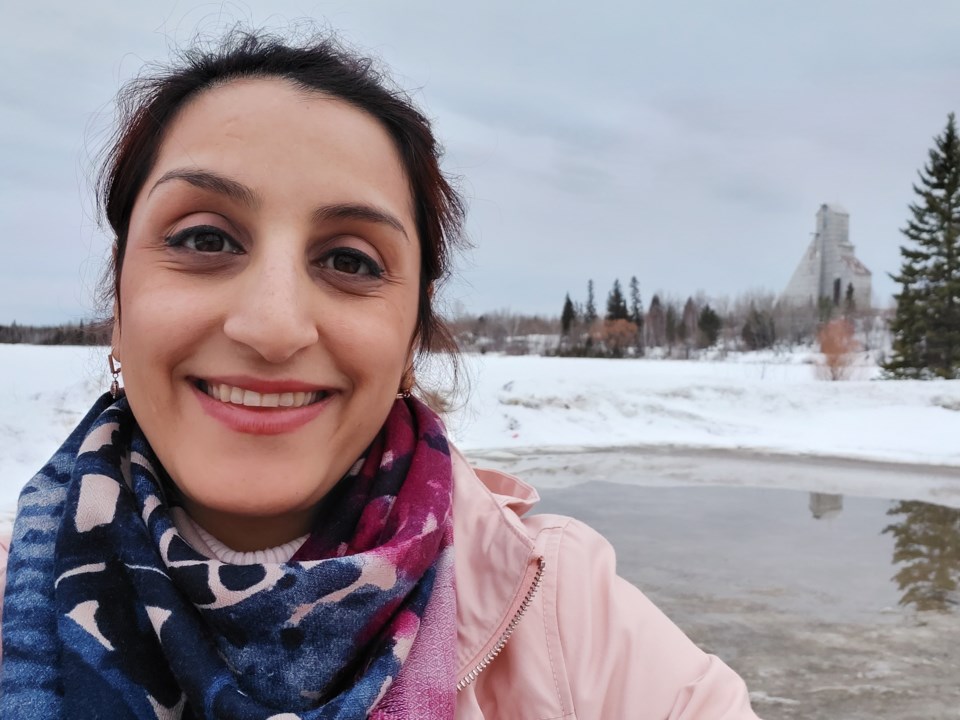Zeinab Azadbakht has always been fascinated with geology. In Canada, she's found her footing in the industry.
Azadbakht, 37, is a regional resident geologist for the Timmins and Sault Ste. Marie district, working for the Ontario Geological Survey's (OGS) Resident Geologist Program.
The OGS is a part of the Ministry of Energy, Northern Development and Mines.
Born in Tehran, Iran, Azadbakht has always loved nature, mountains and doing research. Her father had a factory producing mining machinery. Seeing him work and handle rocks intrigued her, Azadbakht said. In high school, she chose science as a major and when the time came to enrol in university, she decided to pursue being a geologist.
"Whenever we would go out, my siblings would be playing, drawing and swimming, and I would be looking at rocks and picking things," she said. "Through reading the texts in high school, I found some of the answers I was looking for."
The industry in Iran was male-dominated when Azadbakht received her bachelor’s and master’s degrees. After she started working, there were many restrictions like women weren't allowed to go out into the field to take samples.
Want to read more stories about business in the North? Subscribe to our newsletter.
“Guys would go out, take samples and bring them back," she said. "My job was to interpret some geological data that I haven’t laid my eyes on."
The few times she did end up going to the mines, she felt how "out of place" she was.
“I never understood why there should be such segregation between genders. If you’re good at doing what you’re doing, if you love what you’re doing, there shouldn’t be any segregation, there shouldn’t be any discrimination,” she said.
When Azadbakht emigrated to Canada with her family in 2009, she was told she couldn’t be a geologist because of a lack of Canadian experience. That was a “huge sad moment” as being a geologist is a big part of her personality, she said.
"When I came to Canada, little by little I realized that I have a voice. I can make a sound, I can make changes necessary in my life and I was lucky enough to have a very supportive family," she said.
What she loves about geology is travelling, nature and being able to learn something new.
It took Azadbakht three years to figure out how to get back on track and continue doing what she loves. During her Ph.D. studies in New Brunswick, Azadbakht travelled a lot visiting underground mines and open pits, presented talks at various conferences, and got to travel all across Canada except for Nunavut and Northwest Territories.
“What I love and (am) fascinated about geology itself is you don’t need a lab, you don’t need a textbook,” she said. “Wherever you go, it’s a lab. You can take a sample, you can learn something new. It’s amazing how many new things you can encounter even in one day.”
Sign up for the Sudbury Mining Solutions weekly newsletter here.
Her career also included teaching as a sessional lecturer and lab instructor at the University of Regina. Back in Iran as she was doing her master’s degree, she also tutored a few students and worked as a teacher assistant.
One of the moving moments of her teaching career in Regina was when she gave an assignment that sent her first-year non-geology students searching and identifying rocks across the campus for two weeks.
“I wanted my students to realize how geology is embedded in their lives without them realizing it,” Azadbakht recalled.
“We have in the geology department this beautiful rock wall that displays rock slabs of different rock types. I included that in my assignment for my students to go and identify a few (rocks) from that,” she said. “The rock display has always been just a rock display but for two weeks, the students would come, stand by it, spend time and try to identify different rocks … I was able to show other people how you’re involved in geology without knowing you’re involved.”
Last summer, Azadbakht’s search for a more permanent job led her to Timmins. The majority of her work with the OGS includes contacting clients, presenting scientific talks, attending conferences, doing research, connecting people: doing a little bit of everything, she said.
Timmins is known as a gold district and, as the result, the majority of exploration and mining activities are focused on gold, Azadbakht said, but there’s a potential for rare earth elements (REE) in the area.
The REEs are a group of 15 lanthanide elements plus yttrium and scandium that are used in smartphones, electric cars, batteries and engines.
“They're very important, they’re used in day-to-day life,” Azadbakht said. “They’re pretty expensive, especially terbium. Between those 15 elements at the bottom of the (periodic) table, four of them are being used for the production of the permanent magnets (that) have very, very advanced usage in the high-tech facilities and industries.
"Those four are the most expensive and they dictate the price of the deposit and the price of the exploration program. Looking at the price and the potential we have in Timmins, I think this is the perfect time to start looking for them,” she said.
April 13, Azadbakht is the featured speaker at the Timmins Chamber of Commerce’s State of Mining session. She will talk about critical minerals in Canada and Ontario and about potential exploration for rare earth elements in Timmins.


